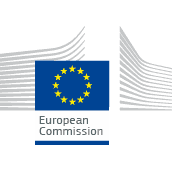
Understanding host-pathogen-environment interactions
Deadline: Sep 13, 2016
CALL EXPIRED
CALL EXPIRED
Topic Description
Specific Challenge:Disease emergence and spread are the result of a number of factors linked to the infectious agent, the host, possible vectors and the environment. The virulence of the pathogen and immunological status and genetics of the host(s) are critical in determining whether the infection develops, remains, spreads or disappears and whether the animal circumvents the disease, becomes sick or a carrier, or recovers. Establishing the biological interplay between pathogen, vectors and host(s), possibly involving other microbiota and reservoir species, is key to understanding the dynamics of infections/diseases and developing control and prevention strategies. There is a growing body of evidence on the capacity of infectious agents to evolve and circumvent the host immunological reaction or treatments and profit from environmental niches; this represents a real challenge. Although modern tools facilitate the tracking of pathogens, a lot still needs to be done to extend our knowledge of the host reaction and how we can use this to develop control and prevention strategies, in particular vaccines or diagnostics, and take the related opportunity to increase the biosecurity status of livestock, which is important both for sustainable production and safe trade.
Scope:The research will improve knowledge of the pathogen-host-environment/possible vectors triangle and their interaction in the spread of major diseases affecting terrestrial livestock. It will contribute to understanding of the dynamics of the disease and the development of more effective control strategies, vaccines or other compounds increasing the host's natural defence/immunity and diagnostics. Projects should address either an epizootic disease such as potentially pandemic animal influenza (scope A) or endemic/production diseases (scope B).
The Commission considers that proposals requesting a contribution from the EU of up to EUR 5.5 million would allow this specific challenge to be addressed appropriately Nonetheless, this does not preclude the submission and selection of proposals requesting other amounts. Funding will allow for support for at least one project under scope A and one under scope B.
Expected Impact:Projects outputs should contribute to the understanding of the dynamics of the diseases in question, as regards the pathogen, the host and (where appropriate) the environment. Project outputs should strengthen the evidence base for prevention and control strategies, including diagnostic, therapeutic and other policy strategies. More generally and in the longer term, the outputs will support the improvement of animal health, contributing to the sustainability and competitiveness of the agri-food sectors.
Public link: Only for registered users
 EC - Horizon Europe
EC - Horizon Europe


Please Log In to See This Section